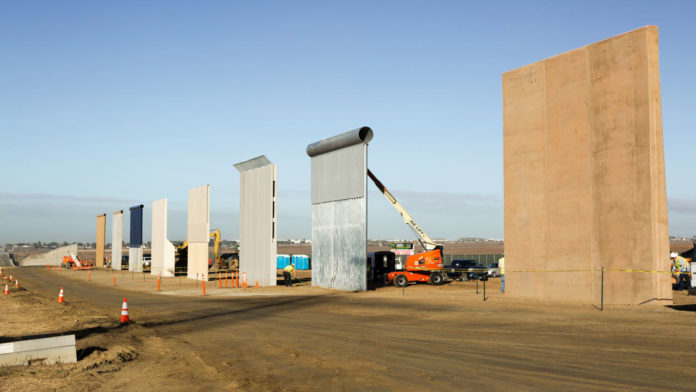In a press release, the border protection agency claims that it issued “two request for proposals to acquire conceptual wall designs with the intent to construct multiple prototypes” on March 17, following a January 25th Presidential Executive Order which tasked the Department of Homeland Security Secretary to “take steps to immediately plan, design and construct a physical wall along the southern border, using appropriate materials and technology to most effectively achieve complete operational control of the southern border.”
The result is these eight options, designed by six different companies. When I look at them, I’m left wondering what design principles, if any, they followed to come up with these prototypes. When I first saw the announcement, I clicked expecting to see eight similar designs, some taller, some thicker, but more or less with the same features. After all, if all the people designing these walls are experts at keeping bad hombres away from the United States, then they must share some kind of common knowledge, some basic rules and best practices on security measures that go beyond “a wall should never lay down horizontal to the ground.”
Alas, that’s not the case. One is a plain concrete wall. Another one has a grill on the bottom and then a smooth concrete top. The next one has a grill too, but the top looks to be made out of blue metal and has deep channels stamped in it. Another one is all flat but has a top grill set at an angle. And then there is this:
I honestly don’t know what is going on here: Bars on the bottom half, solid on the top half, and a giant cylinder at top. I imagine the bars are there so border patrol agents can see illegal immigrants coming from Mexico and that the tubular top just follows Game of Thrones‘ lore, which establishes that the Army of the Dead can neither cross bodies of water nor jump over cylinders.
Now that the prototype phase is complete, the agency will put them through a “testing and evaluation period [of] 30 to 60 days,” including experiments to try their “anti-breaching capabilities, anti-climbing capabilities, anti-digging capabilities, impedance, and denial of traffic,” and answer the question, “Is it safe for BP agents?”
Leaving the last question aside–which I assume means “Would these crappy walls randomly fall over on anyone walking on the U.S. side?”–I can’t help but wonder why we are doing these experiments. Testing anti-breaching capabilities against axes, hammers, or any other wall-breaking tool seems pointless, when there are drones and people on continuous surveillance of the border perimeter, and when there are many ways to breach a wall that don’t involve knocking it down. We know for a fact that no wall in the world will stop people from digging under it unless you start building 1,802 miles under the surface, all the way down at the Earth’s mantle. We also know that no wall–nor cylinder–can stop people from climbing, unless you place turrets with machine guns every few feet, Berlin Wall-style.
According to Homeland Security, “the prototypes will inform future design standards which will likely continue to evolve to meet the U.S. Border Patrol’s requirements.” Here’s a design tip for you, U.S. government: History has demonstrated again and again that neither walls nor oceans can stop immigration. It’s a chimera. Stop wasting our money on useless projects like this and use it on actually useful stuff like FEMA, NASA, or NOAA. Or give the money to HBO so it can put out the next season of Game of Thrones faster. Even that would have more value to the people on the planet than these walls.



















![[Book Review] The Blade Itself (The First Law Trilogy) by Joe Abercrombie](https://bendthekneegot.com/wp-content/uploads/2018/01/1516047103_maxresdefault-218x150.jpg)

















